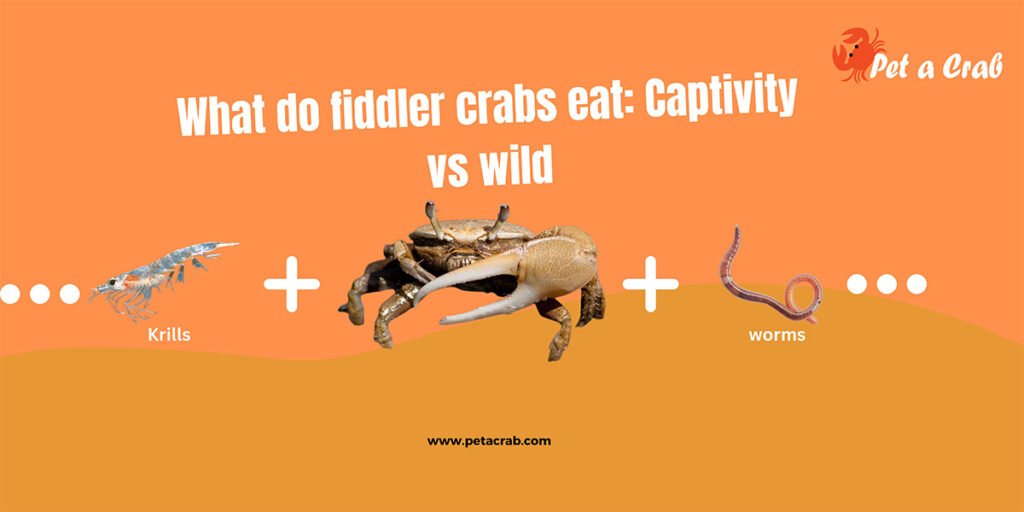The real technique of reproducing captive hermit crab hermit crab is still unrevealed. Hermit crabs live on land but reproduce in the sea. We cannot replicate the ocean environment but we can give our best shot to reproduce hermit crabs. Here we will be talking about how hermit crabs reproduce in the ocean and how we can breed them by measuring their behavior.
How do hermit crabs reproduce?
Attracting mate
The playful creature hermit crabs live in the seashore because they mate in the sea. Hermit crabs sometimes travel to the sea in groups to find mates. They usually attract a mate engaging in courtship behaviors. This can involve antennal tapping, dancing, and physical interaction.
Mating
Once a perfect mate is found, the males and females come out of the shell except for one or two legs in the shell. Then the male hermit crab transfers sperm (spermatophore) to the female, which is accomplished through specialized structures called gonopods.
Egg development and laying
After completing the mating process, the female hermit crab carries the sperm (which is stored in a chamber called the sperm receptacle) until she is ready to lay thousands of eggs. During the egg-carrying period which is around one month, she stays out of the ocean, and her exoskeleton color changes from orange to dull dark gray. When the female is ready to lay eggs, she extrudes them and attaches them near the base of her walking legs, where they get yolk development from the stored sperm.

Incubation
When the eggs are ready to hatch, the female goes back to the ocean. Once the eggs are in contact with salt water they hatch into larvae known as zoeae and are released into the water. During this stage, hermit crab larvae go through several molts (4–5), eventually developing into tiny hermit crabs and searching for shells.
How to breed captive hermit crab
Setting up the mating enclosure
Tank
You can modify the existing enclosure or create a new one. Take a separate ten-gallon tank for a pair of hermit crabs.
Substrate
The most common substrate for hermit crabs is eco-earth, half mixed with beach sand. But as we are replicating the ocean environment, we have to use beach sand six inches deep. Take a plastic container, or any container you want, and place it by picking up some sand so that the level of the plastic container and the level of the sand are equal. Pour saltwater into the container because they do not mate in fresh water and we are trying to mimic the ocean environment.
Water
Place another container for fresh water. The focus should be the saltwater but they need freshwater to drink.
Temperature and humidity
Keep the normal temperature, which is 75°F to 85°F. Use a thermometer to monitor and to ensure the temperature is warm and between this range. Usually, a heating mat on one side of the tank is used for hermit crabs tank. You can use that no problem but if you want to be more specific, you can use a heat rock.
Use a hygrometer to monitor the humidity. Hermit crabs need a high humidity level of 70 to 80 percent. Use a mister spray bottle to keep the enclosure humid. Do not place the tank under the sun and do not use a heat lamp, as it will zap the humidity.

Hiding place
Hermit crabs need hiding places, especially in the mating period. Use wood or any other crafted hiding places like half log pipe, castle crib, SpongeBob’s pineapple house, clay pots, cholla wood, mossy cave hideout, and catappa leaves. Don’t forget to bring some stones and gravel. Add some decorative plastic plants, real is preferable, and don’t forget about food.
Hermit crab’s breeding process
#Step 1
Hermit crab’s breeding season is spring and summer. So try the process at that time. Find a mature couple for breeding. Pick a healthy male (a male crab doesn’t have gonophores located at the abdomen on the back of his body) and a female (a female crab has gonophores located at the abdomen on the back of her body) of the same size (which should be medium-sized) and from the same species. Put the couple into the specialized habitat and ensure they don’t fight.
Wait for a few days; if the crabs don’t mate, try a different combination. Remember it is very rare to mate in captivity so don’t lose hope.
#Step 2
After completing the mating process the female needs a month to develop the eggs. This process takes around a month. Once the female is ready to lay eggs, she will go back to the saltwater container and the eggs will hatch into larvae after getting in touch with saltwater. Place the larvae in aerated cups and for healthy growth feed them brine shrimp, sliced strawberry, and spirulina.
For the next sixteen days, they will swim, eat, and grow, molting through five larval stages (stage one – day one, stage two – day five, stage three – day nine, stage four – day twelve, and stage five at day fifteen), shedding their exoskeleton each time and day sixteen is about to become megalopa in which stage they have the full body properly developed from large eyes to developed legs and long abdomen. source

#Step 3
Every larvae won’t survive till day sixteen (very few will). So separate the megalopas into another cup and put the cup in a crabitat.
From day 24 – 25, they will start searching for shells as they turn into fully grown hermit crabs. Give them different sizes of shells according to their body size. Once they choose the right shell, they are ready to go to their own enclosure. Set up a 20 – 30 gallon talon tank for 3 – 4 hermit crabs. The enclosure should be hermit-crab-friendly, as they are not strong enough to take stress. Learn what hermit crabs need in their tank and how to set it up properly.
You can see the process of breeding hermit crabs to understand the process more accurately.


